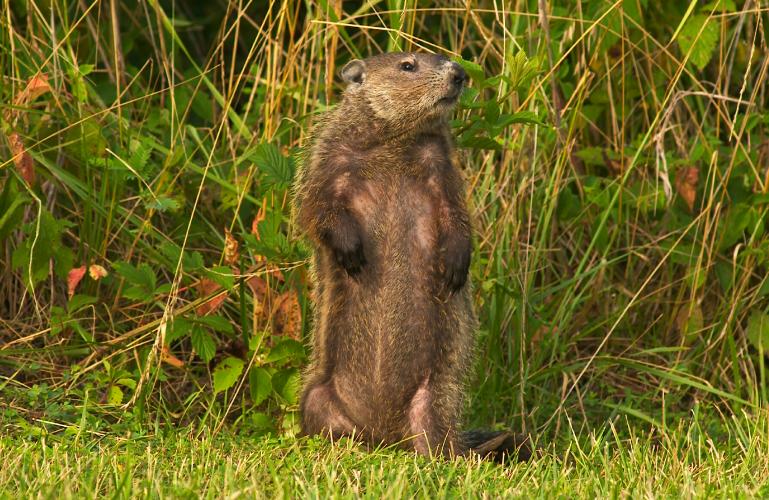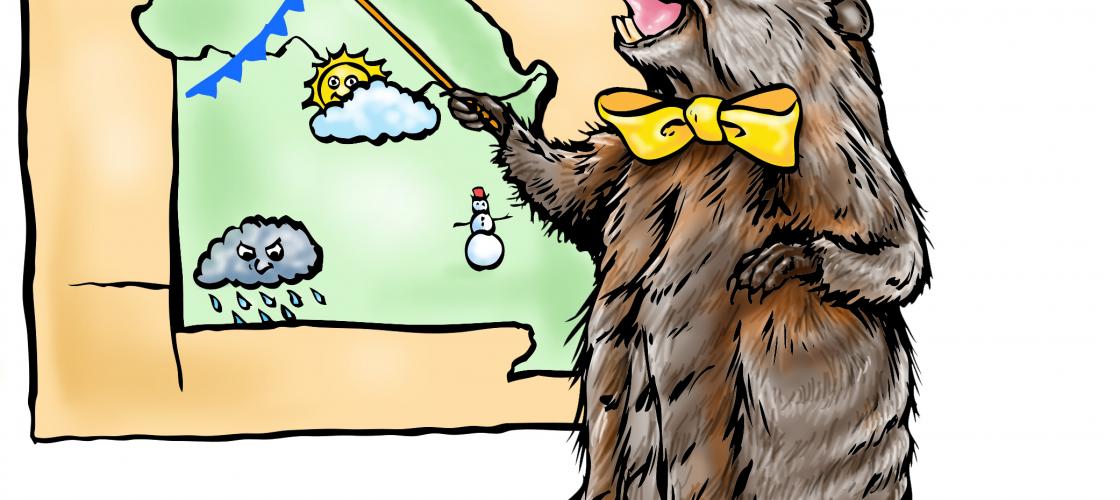On February 2, people watch to see if groundhogs, those furry weather forecasters of February, will see their shadow. There's so much more to know about this famous animal than having a special day dedicated to its shadow.
Also known as woodchucks, groundhogs spend the cold months in an underground burrow, hibernating winter away. They are often seen waddling along in summer and early fall gorging on plants before their winter's nap. Groundhogs are stout animals with strong legs built for digging. They are expert homebuilders that can sometimes complete a burrow in a single day.
Groundhogs are covered with a grizzly brown fur. They're one to two feet long, weighing up to 14 pounds. They are heaviest in the fall just before hibernation and awaken skinny in the spring, sometimes at half their fall weight.
Watch for a groundhog's winter den in a wooded or brushy area. Here they'll build a complex tunnel system, complete with nest, front door and side entrances. By early November most groundhogs are already hibernating. Only after an uncommonly warm spell will a groundhog awaken and crawl out of its burrow. In this area, groundhogs begin emerging in February. Contrary to popular belief, they come out looking for plant growth rather than their shadows.
Get To Know The Groundhog:
The woodchuck's importance as a builder of homes for other animals is significant; skunks, foxes, weasels, opossums and rabbits all use woodchuck burrows for their dens.
When alarmed or suddenly disturbed, they can give a loud, shrill whistle sound.
The woodchuck is almost a complete vegetarian, eating leaves, flowers, grass stems, field crops and many kinds of wild herbs.
They're found statewide, but rare in the Mississippi Lowlands, where the water table is so high that denning sites are limited.
Woodchucks formerly were trapped for their fur, which was used for coats.
Discover more about groundhogs in the MDC Field Guide.
Watch the video below to learn the answer to "How much wood would a woodchuck chuck if a woodchuck could chuck wood?"




Recent Posts
























